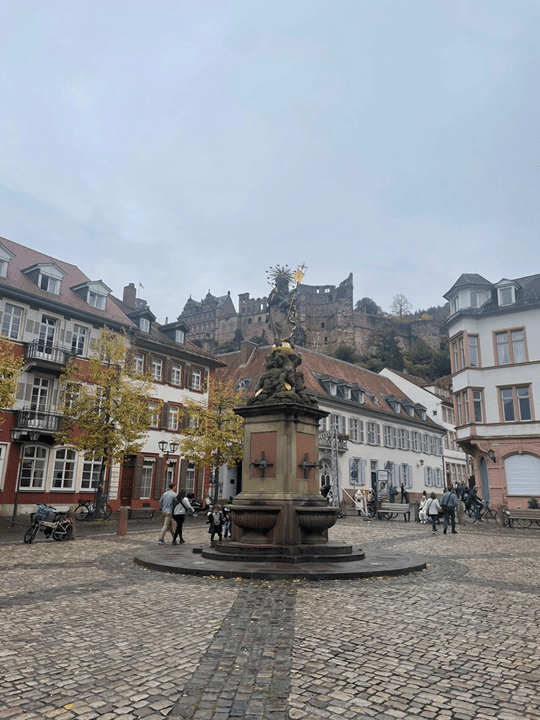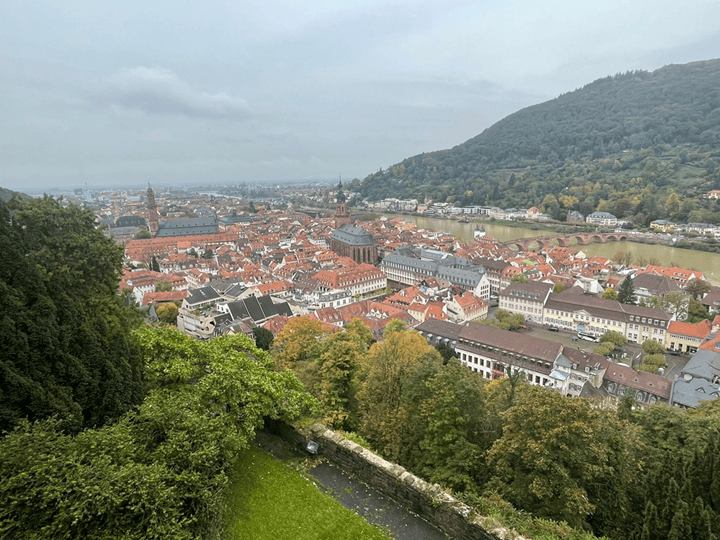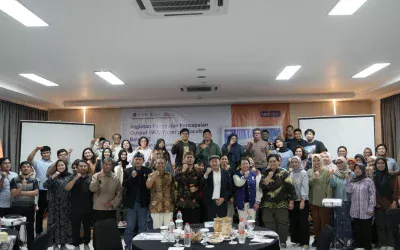At the end of a five-day visit to Italy and Germany, the delegation from the Faculty of Social and Political Sciences (FISIP) at Universitas Diponegoro (Undip) made a brief stop in the historic city of Heidelberg, located in the state of Baden-Wurttemberg. This city is situated in the northwest part of Germany, along the Neckar River, which flows from Tubingen and merges with the Rhine River near Mannheim. According to the inscription on one of the public buildings we passed, the city has existed since the 14th century, although historical records indicate even older structures.
The journey from Frankfurt to Heidelberg via Regional Train took approximately 1.5 hours with one transfer at Neue-Edingen Station. The FISIP Undip delegation arrived in Heidelberg at around 10:30 a.m. The weather that day was quite cloudy and humid, with light rain throughout the journey. Along the way, it was evident how the local government had made efforts to preserve the ancient buildings still standing. The old city centre of Heidelberg is situated around Heiliggeistkirche (Church of the Holy Spirit), which is as old as the city itself. Additionally, Heidelberg is home to Heidelberg University, the oldest university in Germany. Unfortunately, due to the continuous rain, the FISIP Undip delegation did not have the opportunity to visit the university.

Photo 1. View of Heidelberg from Heidelberg Castle
In the afternoon, the group continued their journey to Heidelberg Castle, which is located on the hills to the south of the city. According to historian Harry B. Davis, the castle is over 800 years old. In 1537, the castle suffered significant damage, and despite being repaired and developed until the 1700s, it was gradually abandoned and left uninhabited. In the 19th century, the castle became increasingly popular among tourists, partly due to the writings of famous figures such as Victor Hugo and Mark Twain.
After visiting Heidelberg, the FISIP Undip delegation observed at least three similarities between this city and Semarang. First, both cities have old town districts that attract tourists from various regions. In 2023, the number of tourist visits to Semarang reached approximately 6 million, while the number of visitors to Heidelberg was double that figure. Heidelberg’s success in attracting such a large number of tourists can serve as inspiration for Semarang to further increase its tourist numbers.

Photo 2. Kornmarkt Square, located in the southern part of Heidelberg’s Old Town
Second, both Heidelberg and Semarang are cities with a high student population. Around one-fifth of Heidelberg’s residents are students. Although the proportion of students in Semarang is smaller, it remains significant. A total of 270,000 students pursue higher education in Semarang, with a total population of around 1.6 million. This data places the student proportion at 17% for Semarang. Heidelberg, with a considerable number of international students from various countries, can serve as a model for Semarang in its efforts to internationalize education.
Lastly, both cities have a high degree of cultural diversity. Heidelberg’s population includes individuals of Christian, Catholic, Muslim, and Jewish backgrounds. Similarly, Semarang boasts a diverse population, where the majority practice Islam, Christianity, Catholicism, Buddhism, and Hinduism. Despite this diversity, the people in both cities appear to live harmoniously. This commonality can serve as a source of learning to strengthen the communities in both cities.
Contributor:
Bangkit Aditya Wiryawan





0 Comments